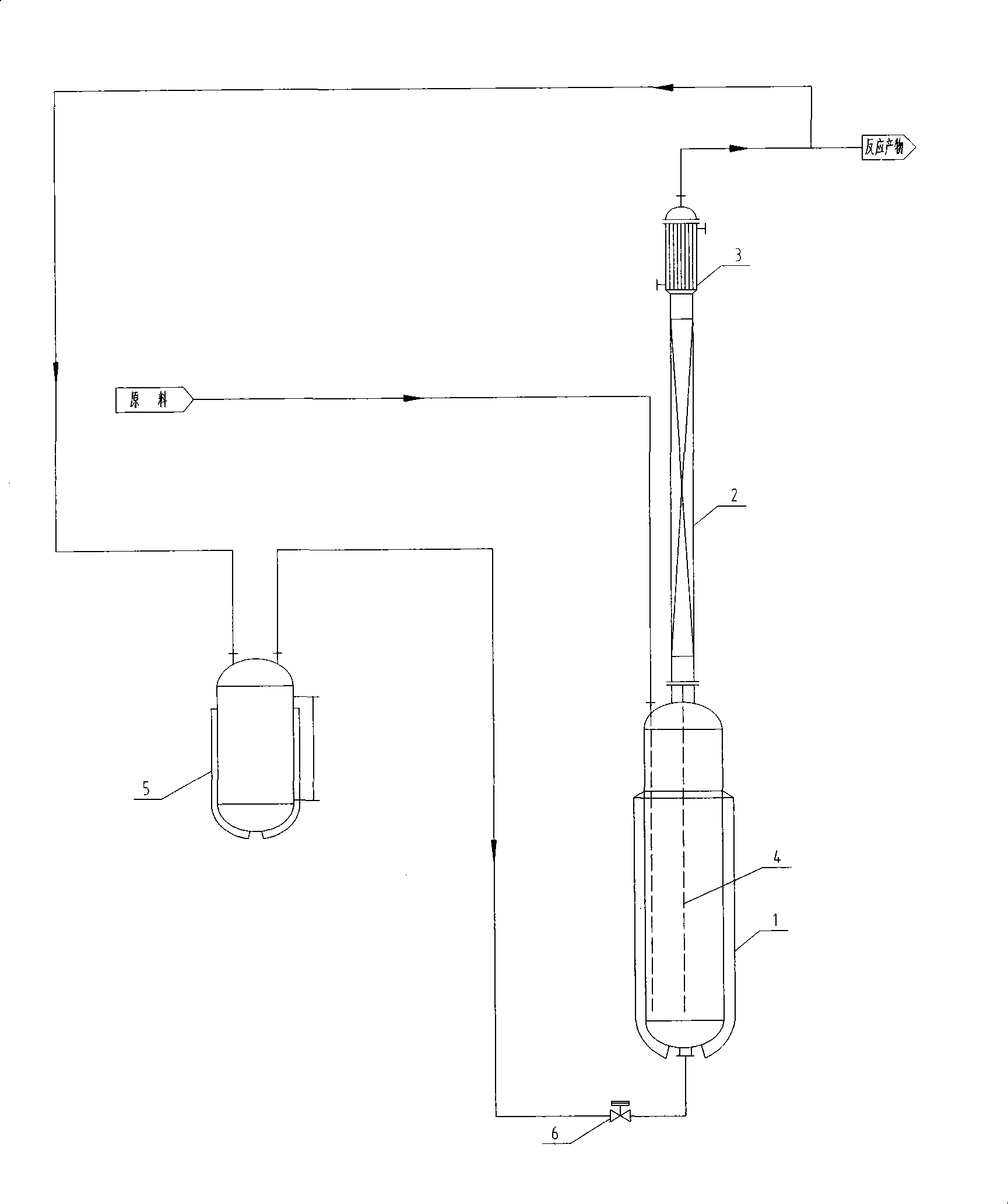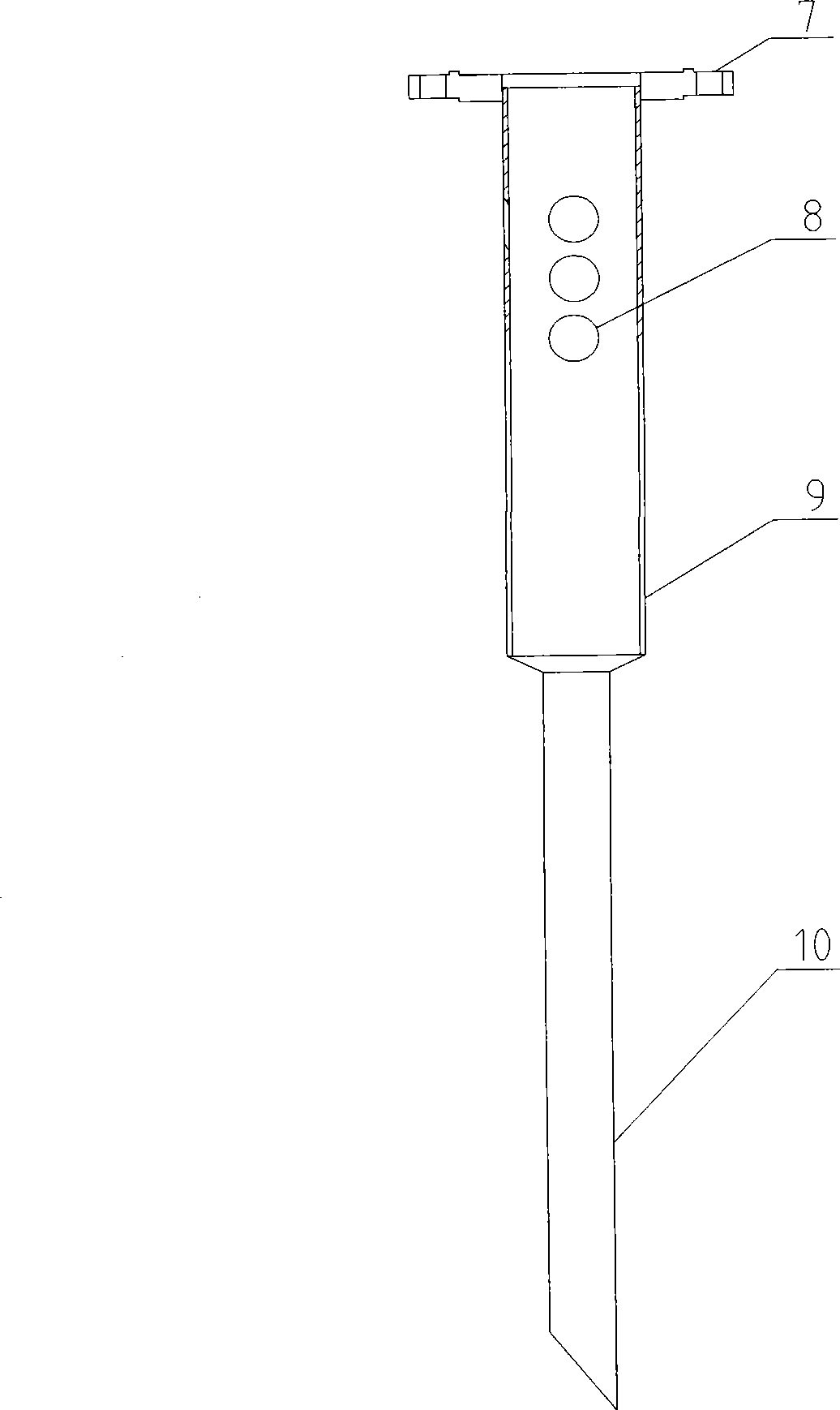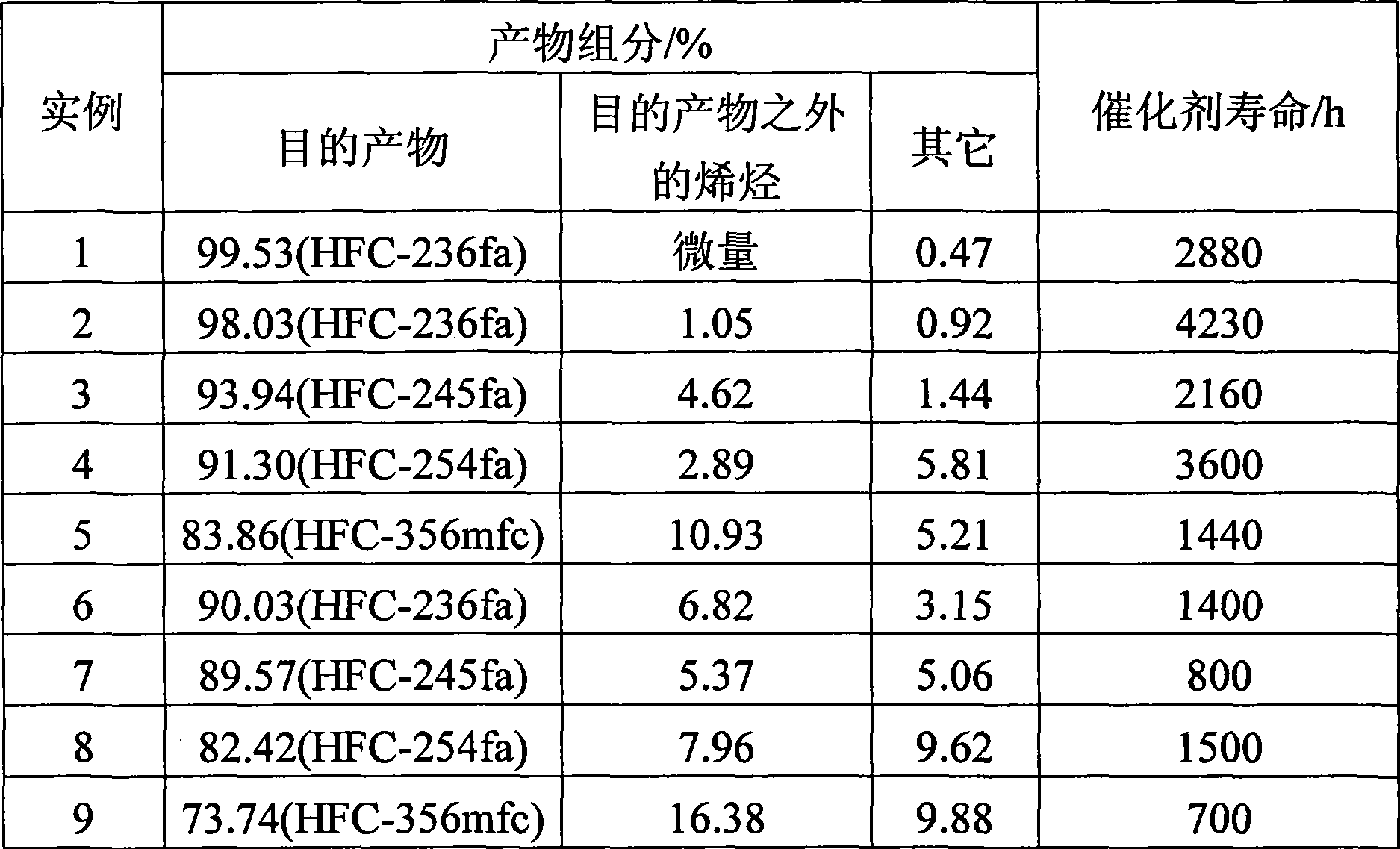Method for prolonging the life of liquid-phase fluorination catalyst
A fluorination catalyst and life-span technology, applied in physical/chemical process catalysts, chemical instruments and methods, chemical recovery, etc., can solve problems such as impurities or corrosion, easy deposition, and low effect, and achieve high reaction selectivity and yield , improve the mass transfer condition, and use for a long time
- Summary
- Abstract
- Description
- Claims
- Application Information
AI Technical Summary
Problems solved by technology
Method used
Image
Examples
Embodiment 1
[0021] In a 50L fluorination reactor, add 25kg of antimony pentachloride. HCC-230 and AHF are continuously fed into the reactor in a ratio of 1:5~6mol / mol. During the reaction process, chlorine gas was continuously introduced, and the total amount was 0.001 of the moles of HCC-230. The fluorination reactor controls the kettle temperature to 70-90°C, the top temperature to 15-35°C, and the reactor pressure to 1000-1300kPa. The HFC-236fa (content 99%) returned to the fluorination reactor is heated, vaporized and pressurized to 1100-1400kPa by a pulsation device, and then introduced into the fluorination reactor at a rate of 1 time / h and 3 min / time. The reaction product is washed to remove inorganic acid, collected after condensation and liquefaction, and analyzed for component content. Catalyst life and product component content are shown in Table 1.
Embodiment 2
[0023] In a 1000L fluorination reactor, add 500kg of antimony pentachloride. HCC-230 and AHF are continuously fed into the reactor in a ratio of 1:5~6mol / mol. During the reaction process, chlorine gas was continuously introduced, and the total amount was 0.001 of the moles of HCC-230. The fluorination reactor controls the kettle temperature to 70-90°C, the top temperature to 15-35°C, and the reactor pressure to 1000-1300kPa. The HFC-236fa (content 95%) returned to the fluorination reactor is heated, vaporized and pressurized to 1100-1400kPa by a pulsation device, and then introduced into the fluorination reactor at 2 times / h and 3min / time. The reaction product is washed to remove inorganic acid, collected after condensation and liquefaction, and analyzed for component content. Catalyst life and product component content are shown in Table 1.
Embodiment 3
[0025] In a 50L fluorination reactor, add 25kg of antimony pentachloride. HCC-240 and AHF are continuously fed into the reactor in a ratio of 1:5~6mol / mol. During the reaction process, chlorine gas was continuously introduced, and the total amount was 0.001 of the moles of HCC-240. The fluorination reactor controls the kettle temperature to 70-90°C, the top temperature to 15-35°C, and the reactor pressure to 1000-1300kPa. The HFC-245fa (with a content of 90%) returned to the fluorination reactor is heated and vaporized by a pulsation device to increase the pressure to 1100-1400kPa, and then introduced into the fluorination reactor at 2 times / h and 3min / time. The reaction product is washed to remove inorganic acid, collected after condensation and liquefaction, and analyzed for component content. Catalyst life and product component content are shown in Table 1.
PUM
 Login to View More
Login to View More Abstract
Description
Claims
Application Information
 Login to View More
Login to View More - R&D
- Intellectual Property
- Life Sciences
- Materials
- Tech Scout
- Unparalleled Data Quality
- Higher Quality Content
- 60% Fewer Hallucinations
Browse by: Latest US Patents, China's latest patents, Technical Efficacy Thesaurus, Application Domain, Technology Topic, Popular Technical Reports.
© 2025 PatSnap. All rights reserved.Legal|Privacy policy|Modern Slavery Act Transparency Statement|Sitemap|About US| Contact US: help@patsnap.com



